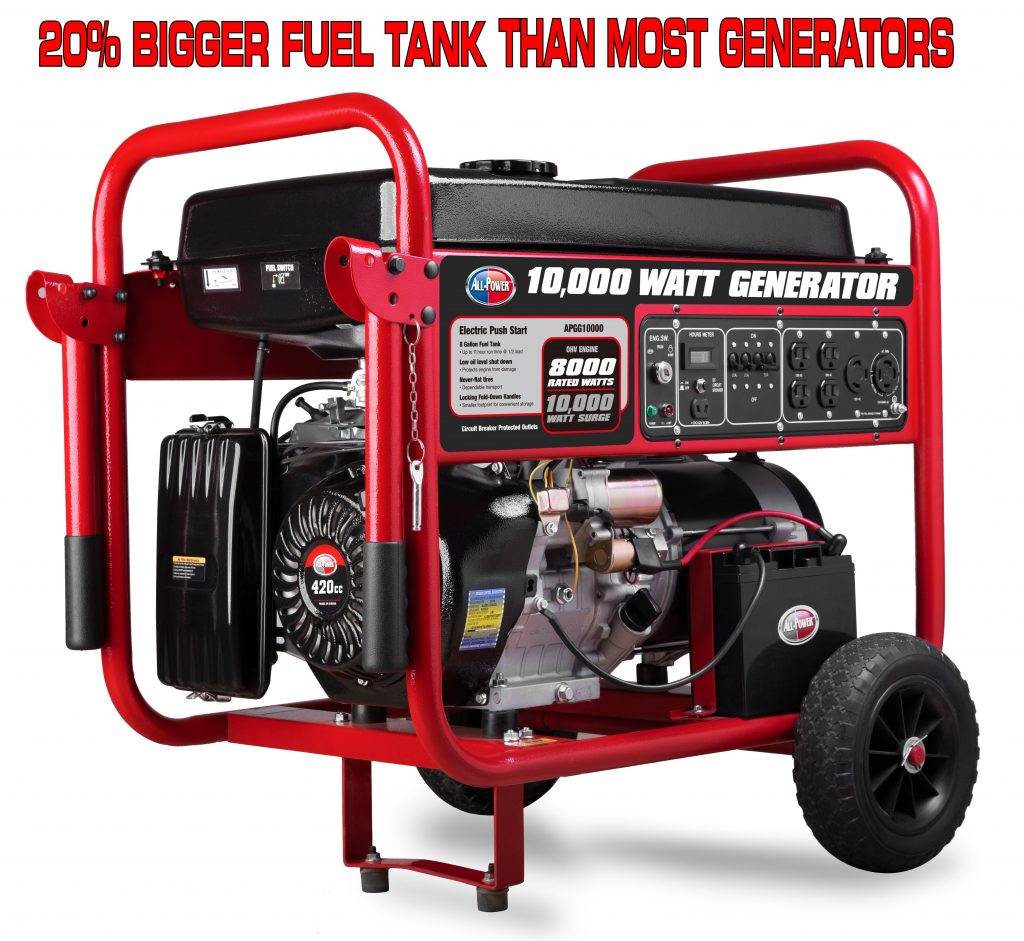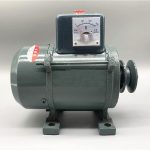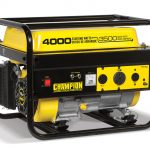A generator for electricity is a great way to provide your home with power in times of need. When figuring out what size generator is needed to power your home, there are a few important factors to consider. First, you need to determine what size your home is. If your home is large, then you may need a larger generator than if your home is small. If your home is an average size, then you will likely need a generator that is between 7,500 and 10,000 watts.
Another factor to consider is how many appliances you plan to power. A generator that is too small will not be able to handle the power demand of multiple appliances, so it is important to ensure your generator is large enough to handle the wattage of all the appliances you plan to power. Finally, you need to think about how often you will be using the generator. If you plan to use it as a backup power source, then you will likely need a smaller generator than if you plan to use it consistently. In short, the size of generator you need for your home will depend on your home size, the number of appliances you plan to power, and how often you plan to use it. With the right generator, you can ensure your home has adequate power in times of need!
How do you plug a generator into your house?
The first step is to make sure the power to your home is shut off. This can usually be done by switching off the main circuit breaker or by unplugging your home from the power source. Once the power source is disconnected, you can then plug in the generator. Generally, a generator will have a standard three-pronged plug that you can connect directly to a special power outlet in your home. Once the generator is plugged in, you can then turn it on and it will begin to provide electricity to your home. Make sure to read the instruction manual for your specific generator and follow the safety precautions outlined there.
How strong should a generator be to power a house?
A generator to power a house needs to be strong enough to produce enough electricity to meet the demands of the home. The size of the generator needed will depend on the amount of power that the house draws. Generally, a generator with a power output of at least 5,000 watts should be enough to power a medium-sized home. A larger home may require a generator with a higher rating. When selecting a generator for a home, it is important to consider the appliances and electronics that will be connected to it.
Some items, such as air conditioners, electric stoves and hot water heaters, require a lot of power and will require a higher rated generator. The installation of the generator also needs to be done correctly. A professional should be consulted to ensure that the generator is wired correctly and safely. Proper maintenance of the generator is also essential to ensure that it runs smoothly and safely. In general, a generator of 5,000 watts or more should be sufficient to power a medium-sized home. For larger homes, it is advisable to consult with a professional to determine the size and power rating of the generator that is needed to reliably power the house.
What does a current generator do?
It works by converting mechanical energy into electrical energy. This makes it possible to use electricity in everyday life. The current generator works by using magnets and electric coils to generate alternating current (AC) electricity. The magnetic field of the generator causes the electric coils to rotate around the core, which creates a current flow. In a typical generator for electricity, the mechanical energy is provided by a turbine or other type of engine.
This energy is then converted into electrical energy through the generator’s magnetic field. The generated electrical energy can then be used to power household appliances or other electrical devices. Generators are usually categorized by their power output, which is measured in watts. There are a variety of generators with different wattages, allowing them to be used for different applications. For example, a small generator can be used to power a single light bulb while a larger generator can power an entire house. Overall, a current generator is an important device used to generate electricity. It works by converting mechanical energy into electrical energy, which can then be used to power a variety of electrical devices.
Is it possible to generate a current without a battery?
Generators do not require a battery to generate an electrical current. Instead, they rely on the principles of electromagnetism to create the current. Generators rely on the interaction between a magnetic field and an electric conductor to produce electricity. This is done by using a shaft to cause a rotor to spin, which in turn creates a magnetic field. As the magnetic field passes through the coils of a generator, it pushes the electrons in the conductor, creating an electrical current.
Generators can be used to generate a variety of electrical currents, including AC and DC. AC current is the type of current used in most homes and businesses, while DC current is used in more specialized applications. The type of current being generated is determined by the type of generator being used. Generators do not need a battery to generate an electrical current, and they can be used to produce electricity even in remote areas where sources of energy are limited. Generators are an important part of the electricity infrastructure, and they provide a reliable source of energy in times of need. In conclusion, it is possible to generate a current without a battery using a generator for electricity. Generators rely on the principles of electromagnetism to create the current, and they can be used to produce a variety of electrical currents. Generators are an important tool in providing a reliable source of electricity in remote and off-grid areas.
Is there a generator that runs on electricity?
One type of generator that runs on electricity is an electric generator. This type of generator utilizes an electric motor to generate electrical power. It converts the mechanical energy generated by the motor into electrical energy that can be used to power appliances, lights, or other electrical devices. When selecting an electric generator, it is important to consider the power output, the size and weight, the noise level, and the fuel type. Generators that run on electricity are generally quieter than other types of generators, but they can be expensive to purchase.
In addition to electric generators, there are also inverter generators that are powered by an internal combustion engine. These generators are more fuel efficient and can be used to power smaller appliances and electronics. They are also typically more lightweight and portable than electric generators. No matter which type of generator you choose, it is important to make sure that it meets your needs and can be safely operated. Generators that run on electricity can provide a reliable source of power for both home and commercial applications.
What are the 4 types of generators?
Generators for electricity are important sources of energy for many homes and businesses. They are great for providing backup power in case of outages, or for powering appliances and tools in areas that are not connected to the main grid. There are four main types of generators for electricity: portable, standby, inverter, and whole-house. Portable generators are the most common type of generator used for providing temporary power to appliances and tools. They are relatively inexpensive and easy to use, making them a great choice for those who need short-term power.
Standby generators are more powerful than portable generators and are usually used to provide power to a single appliance or tool. They are often used to supply power to sump pumps and other essential equipment that require more power than a portable unit can provide. Inverter generators are similar to portable generators but are quieter and more efficient. They are ideal for powering sensitive electronic equipment as they convert DC power to AC power and vice versa. Finally, whole-house generators are the most powerful type of generator used for powering an entire house or business. These generators are typically powered by either natural gas or propane and can provide power to all of the appliances and equipment in a home or business.
What type of electrical current is a generator an example of?
This type of current moves in two directions, reversing its direction many times per second. Generators are used to create electrical energy from mechanical energy. When a generator is used to produce electricity, it converts mechanical energy from a fuel source into electrical energy. This energy can then be used for a variety of purposes, such as powering homes and businesses. Generators are used in a wide range of applications, from large-scale power plants to small-scale portable generators. They are also used to provide backup power in case of an emergency. Generators are an essential component of any energy system, as they provide us with a reliable source of energy.
What are four types of electrical generators?
Electric generators are devices that convert mechanical energy into electrical energy. There are four main types of electric generators: permanent magnet generators, induction generators, synchronous generators, and steam turbines. Permanent magnet generators are the simplest generators and are used in many applications. They use an external source of power to spin a magnetic field, which then induces a current in the generator. This type of generator is commonly used for portable applications such as electric tools and gadgets.
Induction generators are more efficient than permanent magnet generators, and are used in a wide variety of applications. An induction generator works by passing an electric current through a magnetic field, which then induces a current in the generator. This type of generator is commonly used for large-scale applications such as power plants. Synchronous generators are the most efficient type of generator, and are used for large-scale applications such as power plants. A synchronous generator works by using an external source of power to spin a magnetic field, which then induces a current in the generator. This type of generator is often used in conjunction with other generators to provide a reliable power supply. Steam turbines are the most powerful and efficient type of generator, and are used primarily in large-scale applications such as power plants. A steam turbine works by using steam to power a turbine, which then drives a generator to produce electricity. This type of generator is highly efficient and produces large amounts of power for industrial and commercial applications.
How does a generator work and produce current?
A generator for electricity works by generating an alternating current. Inside the generator, a coil of wire is spun inside a magnetic field. As the coil spins, the magnetic field causes electrons to move through the coil, creating an electric current. This current is then passed through a transformer, which converts the alternating current into a single-phase current that can power lights and other electrical appliances. The speed at which the coil spins is determined by the amount of power needed.
The faster the coil spins, the greater the amount of electricity produced. This is why generators are often run by an engine or turbine, which can increase the speed of the coil when more power is needed. Generators can also be powered by steam, wind, water, or other renewable sources. As the generator spins, it produces a continuous flow of electrons, which is then converted into usable electricity. The electricity is then stored in a battery or sent to a power grid. In summary, generators for electricity work by converting mechanical energy into electrical energy. This energy is then transformed into usable electricity and supplied to a power grid or stored in a battery.
How does a small generator produce current?
A small generator produces electricity through a process of conversion. In this process, mechanical energy is converted into electrical energy. This is done through the use of an electric motor that rotates a wire coil inside a magnetic field. As the wire coil is rotated, a current is generated and directed through the generator. The generator then transmits the electrical energy to a converter, inverter, or battery.
The converter, inverter, or battery then changes the electrical energy into a form that can be used to power various devices. Depending on the model of the generator, the current can be either AC (alternating current) or DC (direct current). The amount of electricity produced by a small generator depends on several factors, such as the size of the generator, the type of motor used, the type of magnetic field, and the speed of rotation of the wire coil. Generally, the more powerful the motor and the faster the rotation of the wire coil, the more electricity is produced. Small generators are used in a variety of situations, such as camping, emergency power, powering small electrical appliances, or providing backup power during power outages. They can also be used to provide electricity to remote areas or areas with unreliable power supplies. In conclusion, a small generator is an effective way to produce electricity. It works by converting mechanical energy into electrical energy, which is then transmitted to a converter, inverter, or battery for use in various devices. The amount of electricity produced depends on the type of generator and the speed and power of the motor.
How is current produced in a generator?
Generators use electromechanical energy, such as mechanical energy from a motor, to generate electricity. Within the generator, mechanical energy from the motor is converted into electrical energy through a process called electromagnetic induction. This process occurs when a magnetic field is generated by passing an electrical current through a coil, causing electrons to move and create an electric current. This electric current is then passed through a series of components in the generator which generate the electricity needed for our everyday use. Generators are an important part of the production of electricity, allowing us to power our homes, businesses, and other everyday applications.
How do electric generators produce a current?
Electric generators are a key component in producing electricity. They use mechanical energy to produce a current by spinning a coil wire between the poles of a magnet. As the coil is spun, it produces a changing magnetic field that induces a current in the wire. This current is then conducted to transformers, where it is stepped up in voltage. The current is then distributed along transmission and distribution lines, where it can be used in homes, businesses, and other locations.
In this way, electric generators play a critical role in supplying electricity to the grid. The most common type of electric generator uses an alternator, which consists of a rotor and a stator. The rotor is spun by a motor, and the stator is a series of electromagnets that are arranged in a circle around the rotor. As the rotor turns, the changing magnetic field induces current in the electromagnets. This current is then sent to transformers and the grid, where it is used. Generators can also be powered by other sources of energy, such as steam, water, wind, or solar energy. In each case, the source of energy is used to turn a generator, which then produces a current to be distributed to the grid. Electric generators are vital for producing electricity in a safe, reliable, and efficient way. Without them, it would be difficult to keep the lights on in homes and businesses. By understanding how electric generators work, we can ensure that electricity is delivered in a safe and sustainable way.






